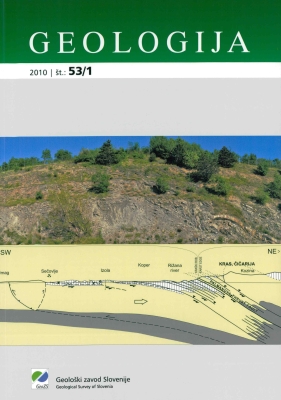Pohorje eclogites revisited: Evidence for ultrahigh-pressure metamorphic conditions
DOI:
https://doi.org/10.5474/geologija.2010.001Abstract
Kyanite eclogites from the Pohorje Mountains, Slovenia, are providing the first evidence of ultrahigh-pressure Eo-Alpine metamorphism in the Eastern Alps. Polycrystalline quartz inclusions in garnet, omphacite and kyanite are surrounded by radial fractures and exhibit microtextures diagnostic for the recovery after coesite breakdown. The non-stoichiometric supersilicic omphacites found in Pohorje eclogites contain up to 5 mol % of Ca-Eskola molecule. Such clinopyroxenes are known to be stable exclusively at high-pressure conditions exceeding 3 GPa. Their breakdown during decompression resulted in exolution of quartz rods and needles that are oriented parallel to omphacite c-axis. The absence of coesite is a consequence of near-isothermal decompression during the first stages of exhumation. Pressure and temperature conditions for the formation of the peak metamorphic mineral assemblages have been assessed through a consideration of a) Fe2+-Mg partitioning between garnet and omphacite pairs, based on different calibrations; b) the equilibrium between garnet + clinopyroxene + phengite ± kyanite ± quartz/coesite assemblage. Estimated peak pressure and temperature conditions of 3.0-3.1 GPa and 750-783 °C are well within the coesite, i.e. the ultrahigh-pressure stability field.Downloads
How to Cite
Vrabec, M. (2010). Pohorje eclogites revisited: Evidence for ultrahigh-pressure metamorphic conditions. Geologija, 53(1), 5–20. https://doi.org/10.5474/geologija.2010.001
Issue
Section
Articles

